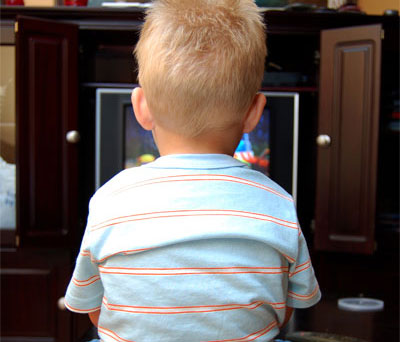Five Tips to Ensure Healthy TV Watching Experience for Your Child
Many households leave the TV on for hours, affecting a child’s eyesight, but it is in the earliest years of their lives that infants develop their vision. Below are 5 rules to ensure your child has a healthy and enjoyable TV watching experience.

One Animated Film Per Day
In early years, extra stress on the eyes could seriously impair a child’s vision so pediatricians recommend that children younger than 2 shouldn’t watch any television. Afterwards, child’s exposure to TV can be gradually increased, starting with 20 to 30 minutes a day.
It is common belief that watching TV for about an hour is appropriate for older preschoolers, so it’s obvious that preschoolers shouldn’t watch more than one animated feature-length film per day. The duration of viewing can be doubled for younger school-goers, though make sure you take a 15 minute break throughout the session.
Creating Healthy Viewing Environment
It is not recommended to watch TV in a dark room because abrupt jumps in screen brightness can quickly strain a child’s eyes. The best time for watching animated films would be at daytime or in the evenings in a light room.
Your child should be at least 8-10 feet away from the screen, sitting on a coach or chair with upright backrest for back support. Don’t let your child eat while watching TV. Obviously, you shouldn’t eat, either, to set a good example.
Take Care of Picture Quality
Viewing animated films for reasonable duration undoubtedly promotes healthy development of children. The lack of visual experiences at early age may cause an amblyopia, or lazy eye, which is a poor transmission of the visual image to the brain. This is why the picture should be clear and free of blinking or any other flaws.
Choose Positive Animated Films
Animated films may boost your child’s imagination and creativity. However, you have to keep a close watch on what your child’s viewing. Animated characters are supposed to be different – mischievous, restless or calm, but never violent – and experience both positive and negative emotions. Animated films should promote friendship, cooperation and good behavior.
Watch Animated Films Together
Nothing develops a bond stronger than having a pastime together! Since children are more responsive to what’s happening on the screen than adults you need to share your child’s excitement. Children always want to let somebody know how they feel. After viewing, you can discuss the film with your child, or draw the characters or even invent a different story about them and act it with your child.
Moreover, watching animated films together is educational as you can explain the difference between right and wrong to your child.
Source of the image: sxc.hu/profile/Annalog85.
